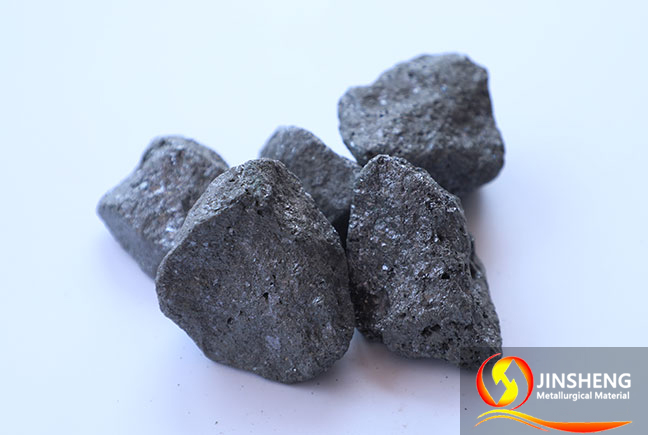What is Silicon-Carbon Alloy?
2025-07-18
Silicon-carbon alloy is a high-performance composite material whose core composition consists of silicon (65%~75%) and carbon (15%~25%). It is produced by smelting quartz, coke and iron filings in a high-temperature electric furnace at 1800~2000℃.
This alloy skillfully combines the advantages of silicon and carbon, possessing both the high-temperature resistance of silicon and the electrical conductivity of carbon. It is these unique properties that make it so important in a variety of applications.

How silicon-carbon alloys are produced
Raw materials
The three main raw materials for the production of silicon-carbon alloys are quartz, coke and iron filings. These raw materials are not used directly, but need to undergo specific ratios and treatments to prepare them for the subsequent smelting process and to ensure the quality of the final product.
Production process
The smelting of silicon-carbon alloys relies on high-temperature electric arc furnaces, which must reach temperatures of 1,800 to 2,000 degrees Celsius. Under such a high temperature environment, the raw materials will undergo a series of complex chemical reactions, and through layers of transformation, the silicon-carbon alloy is finally formed.
Properties of Silicon-Carbon Alloys
High energy density
In the field of lithium-ion batteries, silicon-carbon alloys show great potential for application. The theoretical specific capacity of silicon is about 4200mAh/g, which is much higher than the 372mAh/g of traditional graphite anode materials, and therefore it can significantly increase the energy density of batteries.
Long cycle life
Silicon is prone to volume expansion during charging and discharging, which is effectively mitigated by silicon-carbon alloys. This feature enables the battery's service life to be extended, providing a guarantee of long-term stable use.
Electrical and Thermal Conductivity
Silicon-carbon alloys have excellent electrical and thermal conductivity. This not only improves the charging speed of the battery, allowing users to reduce waiting time, but also enhances the safety of the battery and reduces the risk of use.
Structure Optimization
By optimizing the ratio and structure of silicon and carbon, researchers can design battery anode materials with superior performance and greater stability, further advancing battery technology.
The advantages of Silicon Carbon Alloy
Advantage of Deoxidation
Silicon-carbon alloy contains silicon element, after adding silicon-carbon alloy in the steelmaking process, the silicon element will react with oxygen to realize the deoxidation of steel. This process can effectively improve the hardness and quality of steel.
At the same time, due to the good affinity between silicon and oxygen, steel will not splash after adding silicon-carbon alloy, which guarantees the safety of the steelmaking process.
Advantage of slag collection
Putting a certain proportion of silicon-carbon alloy into steel water can promote the rapid agglomeration of oxides produced in the steelmaking process. In this way, it facilitates the filtering process and makes the molten steel purer.
And pure steel can significantly increase the density and hardness of steel, improving the overall quality of steel.
Advantage of increased furnace temperature
Silicon-carbon alloy is an excellent temperature-resistant material. Adding silicon-carbon alloy to the steelmaking process can increase the furnace temperature. The increase in furnace temperature helps to increase the conversion rate of ferroalloys, and at the same time speeds up the reaction rate between steel and other elements, improving the efficiency of steelmaking.
Cost-saving advantages
Nowadays, the price of ferroalloy materials remains high, while silicon carbon alloy, as a new type of metallurgical material, is less expensive than traditional metallurgical materials. It can replace expensive metallurgical materials such as ferrosilicon with satisfactory results.
This characteristic allows many manufacturers to save costs and thus increase profits.
The price of silicon carbon alloy is the ideal choice to replace ferrosilicon
Silicon-carbon alloys are high-carbon elemental ferrous alloys with a carbon content of 15 - 30 and a silicon content of 55% - 65% of ferrosilicon products.
More importantly, the price of silicon-carbon alloys is lower than that of ferrosilicon. The production process reduces material costs, so if you don't deliberately obsess about carbon content but only focus on silicon content, silicon-carbon alloys are undoubtedly an ideal alternative to ferrosilicon.
Areas of application for silicon-carbon alloys
Block form (10 - 50mm)
Silicon-carbon alloys in bulk form are mainly used for steel deoxidizing and casting carbon enhancement. In steel deoxidation, it can significantly improve the purity of steel; in casting carbonization, it can enhance the wear resistance of castings and improve the performance of castings.
Powder form (100 - 200 mesh)
Silicon-carbon alloy in powder form can be used to synthesize silicon carbide, and can also be used as new energy battery materials. When used in new energy battery materials, it can improve the conductive efficiency of the battery, helping to improve the performance of new energy batteries.
Conclusion
In summary, with its unique composition and production process, silicon-carbon alloy has many excellent characteristics and significant advantages, and has a wide range of important applications in steelmaking, casting, new energy batteries and other fields.






